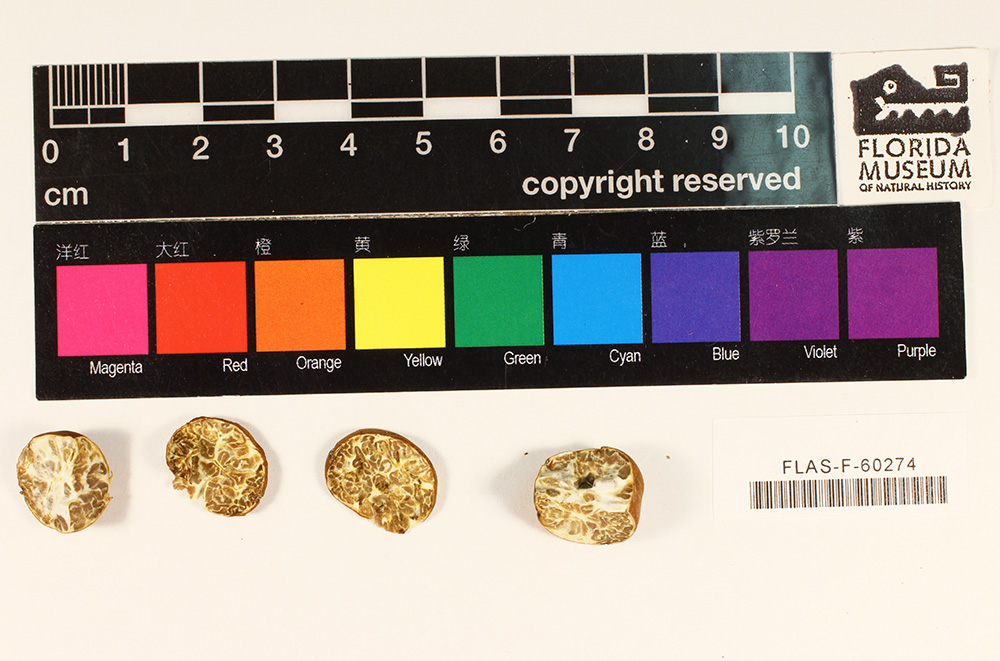- Scientists at the University of Florida have described two new species of truffles from North America. One species was found in Iowa, the other in Florida.
- There are hundreds of species of fungi that form truffles, each of which have important ecological roles. Only a few truffle species are used for human consumption.
- There are likely many undiscovered truffle species in North America.
Scientists at the University of Florida have identified two new truffle species in North America, describing their findings in a recent study.

Each of the new truffle species is about the size of a marble. One species, Tuber eburneum, was found in Iowa. It has an off-white exterior, smells a bit like a baked potato and is related to the Périgord black truffle, a species often used in high end cuisine.
The other new species, Tuber mujicii, was discovered near Gainesville, Florida, at the UF/IFAS Ordway Swisher Biological Station. Tuber mujicii is a light olive brown on the outside and gives off an earthy aroma.
While all truffles in the genus Tuber are technically edible, neither of the new truffles were sampled for taste.
“When you find a new truffle, you want to preserve as much as you can for analysis, so we don’t usually taste test them,” said Ben Lemmond, first author of the study and a doctoral candidate in the UF/IFAS College of Agricultural and Life Sciences.
It’s not every day that scientists discover a new truffle species. For one, truffles are hard to find.
“Truffle field work is like hunting for buried treasure. You go into the woods, rake up the topsoil around trees and hope you find something. Ninety-five percent of the time, you find nothing, but when you do find truffles, it’s very exciting,” Lemmond said.
What’s more, just as plants only produce fruit at certain times or under certain conditions, the fungi that produce truffles do so sporadically.

Finally, even when scientists find a truffle they suspect is a new species, confirming that requires sequencing its DNA and comparing its genetics and anatomy to all known species, which takes time.
But it’s worth it, because discovering and describing new truffle species can provide insights into the ecology of the area where they are found, said Matt Smith, senior author of the study and Lemmond’s doctoral adviser.
“Truffles are essentially underground mushrooms. They form symbiotic relationships with tree roots, helping the trees absorb nutrients, and they provide food for wildlife, which in turn spread truffle spores,” said Smith, as associate professor in the UF/IFAS plant pathology department.
There are likely many more truffle species out there waiting to be discovered, Smith said.
“Because truffle fungi have this symbiotic relationship with tree roots, we can sometimes find traces of them on the roots and determine if it’s a new species based on the DNA. That gives us an idea of where a new species might be commonly found, but it’s not a full picture without the truffle itself,” Smith said.
The DNA of the truffle found in Florida matches that taken from tree roots in Georgia and the Carolinas, proving that the species is also found elsewhere in the Southeast.
The Florida truffle was found by Alija Mujic, then a postdoctoral researcher in Smith’s lab, during a fungi biodiversity survey at the UF/IFAS Ordway Swisher Biological Station, where faculty from all over the university conduct research, conservation and educational activities on the more than 9,500-acre site. Tuber mujicii was named in his honor.
The Iowa truffle, Tuber eburneum has only ever been found twice, both times by Rosanne Healy, a co-author of the study and an assistant scientist on Smith’s lab team. This research was supported by the National Science Foundation, the USDA National Institute of Food and Agriculture, and the UF/IFAS Office of Research.
 3
3
